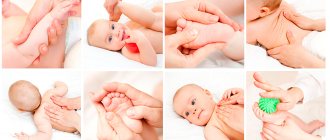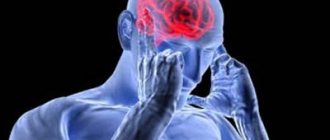The central nervous system is the main regulator of the functioning of the entire body. After all, in the cortical structures of the brain there are departments responsible for the functioning of each system. Thanks to the central nervous system, the normal functioning of all internal organs, regulation of hormone secretion, and psycho-emotional balance are ensured. Under the influence of unfavorable factors, organic damage to the structure of the brain occurs. Pathologies often develop in the first year of a child’s life, but can also be diagnosed in adults. Despite the fact that the central nervous system is directly connected to the organs thanks to nerve processes (axons), damage to the cortex is dangerous due to the development of severe consequences even in the normal state of all functional systems. Treatment of brain diseases should begin as early as possible; in most cases, it is carried out for a long time - over several months or years.
Description of residual organic damage to the central nervous system
As you know, the central nervous system is a coherent system in which each of the links performs an important function. As a result, damage to even a small area of the brain can lead to disruption in the functioning of the body. In recent years, damage to nervous tissue has been increasingly observed in pediatric patients. To a greater extent, this applies only to born babies. In such situations, a diagnosis of “residual organic damage to the central nervous system in children” is made. What is it and is this disease treatable? The answers to these questions worry every parent. It is worth keeping in mind that such a diagnosis is a collective concept that can include many different pathologies. The selection of therapeutic measures and their effectiveness depend on the extent of the damage and the general condition of the patient. Sometimes residual organic damage to the central nervous system occurs in adults. Often, pathology occurs as a result of previous injuries, inflammatory diseases, and intoxication. The concept of “residual organic damage to the central nervous system” implies any residual effects after damage to nerve structures. The prognosis, as well as the consequences of such a pathology, depend on how severely the brain function is impaired. In addition, great importance is attached to topical diagnosis and identification of the site of damage. After all, each of the brain structures must perform certain functions.
Causes of residual organic brain damage in children
Residual organic damage to the central nervous system in children is diagnosed quite often. The causes of nervous disorders can occur both after the birth of a child and during pregnancy. In some cases, damage to the central nervous system occurs due to complications of childbirth. The main mechanisms for the development of residual organic damage are trauma and hypoxia. There are many factors that provoke nervous system disorders in a child. Among them:
- Genetic predisposition. If parents have any psycho-emotional disorders, then the risk of their development in the baby increases. Examples include pathologies such as schizophrenia, neuroses, and epilepsy.
- Chromosomal abnormalities. The cause of their occurrence is unknown. Incorrect DNA construction is associated with unfavorable environmental factors and stress. Due to chromosomal abnormalities, pathologies such as Down's disease, Shershevsky-Turner syndrome, Patau, etc. occur.
- The impact of physical and chemical factors on the fetus. This refers to unfavorable environmental conditions, ionizing radiation, and the use of drugs and medications.
- Infectious and inflammatory diseases during the formation of the nervous tissue of the embryo.
- Toxicoses of pregnancy. Late gestosis (pre- and eclampsia) is especially dangerous for the condition of the fetus.
- Impaired placental circulation, iron deficiency anemia. These conditions lead to fetal ischemia.
- Complicated childbirth (weakness of uterine contractions, narrow pelvis, placental abruption).
Residual organic damage to the central nervous system in children can develop not only during the perinatal period, but also after it. The most common cause is head trauma at an early age. Risk factors also include taking drugs that have a teratogenic effect and narcotic substances during breastfeeding.
Our rehabilitation programs for PCNSL
We provide comprehensive treatment for the consequences of perinatal CNS damage.
Typically, a rehabilitation program includes:
- Observation by a neurologist. The participation of this doctor is necessary, since the child’s condition must be monitored during the process of rehabilitation measures
- Observation by a physical therapy doctor (rehabilitation specialist). The basis of any rehabilitation is the development and restoration of motor skills. A physical therapy doctor will examine a small patient and plan the rehabilitation process, helping to prioritize physical treatment.
- Observation by a neuropsychologist and sessions with a neuropsychologist. The participation of a neuropsychologist in rehabilitation after PCNSL is necessary starting from 2 years of age. The tasks of a neuropsychologist include diagnosing disorders of higher nervous activity in a child, planning and implementing measures to correct them. Neuropsychologists conduct group and developmental classes with children to develop memory, attention, motivation, and thinking. The neuropsychologist also provides family counseling.
- Exercise therapy and kinesitherapy. We are proficient in various exercise therapy techniques. It is impractical to single out just one among them. Exercise therapy techniques are tools in the hands of a doctor and instructor. We try to select the appropriate instrument for each of our patients. The most commonly used methods in children are Bobath therapy and Vojta therapy. We also use PNF, Neurac, manual therapy techniques and many others in our work.
- Massage. Massage plays an important role in the rehabilitation of children. Naturally, it is not an independent procedure, but its reasonable use allows the child to become more aware of his body and helps him learn to control it. In addition, massage in rehabilitation solves many auxiliary problems - eliminating swelling, improving muscle nutrition, temporary decrease in tone, etc.
- Physiotherapy. We widely use physiotherapeutic treatment in rehabilitation after PCNSL. The objectives of physiotherapy are very diverse and depend on the characteristics of the disease. The most commonly used are medicinal electrophoresis, IR dipole, phototherapy, and magnetic therapy.
- If necessary, a speech therapist may be included in the rehabilitation team. Typically, the need to involve this specialist arises when there is a delay in speech development or alalia.
If you have any questions or want to sign up for a rehabilitation program, call us at: +7 (812) 309-67-26 or leave a request through the contact form on the website.
The occurrence of residual organic brain damage in adults
In adulthood, signs of residual organic damage are observed less frequently, however, they are present in some patients. Often the cause of such episodes is trauma received in early childhood. At the same time, neuropsychic abnormalities are long-term consequences. Residual organic brain damage occurs for the following reasons:
- Post-traumatic illness. Regardless of when the damage to the central nervous system occurs, residual symptoms remain. These often include headaches, seizures, and mental disorders.
- Condition after surgery. This is especially true for brain tumors, which are removed using nearby nerve tissue.
- Taking drugs. Depending on the type of substance, the symptoms of residual organic damage may differ. Most often, serious disorders are observed with long-term use of opiates, cannabinoids, and synthetic drugs.
- Chronic alcoholism.
In some cases, residual organic damage to the central nervous system is observed after inflammatory diseases. These include meningitis and various types of encephalitis (bacterial, tick-borne, post-vaccination).
Mechanism of development of central nervous system lesions
Residual damage to the central nervous system is always caused by unfavorable factors that preceded it. In most cases, the basis for the pathogenesis of such symptoms is cerebral ischemia. In children, it develops during the period of intrauterine development. Due to insufficient blood supply to the placenta, the fetus receives little oxygen. As a result, the full development of nervous tissue is disrupted, and fetopathy occurs. Significant ischemia leads to intrauterine growth retardation and the birth of a child before the gestational age. Symptoms of cerebral hypoxia can appear already in the first days and months of life. Residual organic damage to the central nervous system in adults often develops due to traumatic and infectious causes. Sometimes the pathogenesis of nervous disorders is associated with metabolic (hormonal) disorders.
Syndromes with residual organic damage to the central nervous system
In neurology and psychiatry, several main syndromes are distinguished, which can occur either independently (against the background of a brain disease) or be regarded as a residual lesion of the central nervous system. In some cases, a combination of these is observed. The following signs of residual organic damage are distinguished:
- Cerebrasthenic syndrome. Its manifestations are considered to be increased fatigue, unsatisfactory mastery of the school curriculum, general weakness, tearfulness, and mood changes.
- Neurosis-like syndrome. It is characterized by the development of phobias, enuresis (uncontrollable urination at night), and motor agitation (tics).
- Hyperactivity and attention deficit disorder. It is observed in children of primary and secondary school age.
- Encephalopathy. The main manifestations are sleep disturbance, loss of memory, and perseverance. In severe cases, focal neurological symptoms and seizures are observed.
- Psychopathy. Characterized by disobedience and aggressiveness. In adulthood – mood lability, hysterical reactions, antisocial behavior.
Most often, cerebral hypoxia leads to diffuse symptoms, when the listed syndromes are combined with each other and are not very pronounced. The predominance of focal symptoms is rarely observed.
Symptoms, how PCNSL manifests itself
Perinatal encephalopathy is a very multifaceted disease. The following main clinical syndromes of PPCNSL are distinguished:
- Muscular dystonia is a pathological increase or decrease in muscle tone. Normally, all newborns have increased muscle tone of the flexors; in the process of growth and motor development, the flexor tone decreases, becoming normal. This transformation allows a newborn child to have the necessary set of protective reflexes, and during the process of growth, a decrease in flexor tone makes it possible to develop movements. In cases where muscle tone has not decreased in a timely manner or does not change symmetrically, this significantly interferes with the normal development of the child’s motor sphere, the formation of postural control and normal movements.
- Neuro-reflex excitability syndrome is a disorder of sleep and wakefulness, an overly active reaction to sounds and touches.
- CNS depression. Lethargy, apathy, decreased tone and reflexes, drowsiness.
- Intracranial hypertension. This syndrome occurs when intracranial pressure increases. Increased excitability, obsessive screaming, regurgitation, bulging fontanel and Graefe's symptom are most characteristic of this syndrome. Intracranial hypertension can lead to the development of hydrocephalus—a decrease in the volume of brain tissue and its replacement with fluid.
- Convulsions (convulsive syndrome) are involuntary contractions of the muscles of the entire body, accompanied by loss of consciousness or simply “freezing” for several seconds. Convulsive syndrome is dangerous because, if left untreated, it significantly disrupts the normal development of the brain and its function.
Clinical picture of CNS damage
Most often, symptoms of residual organic damage to the central nervous system appear some time after exposure to an unfavorable factor. With perinatal fetal hypoxia, disturbances can be noticeable already in the first month of life. Depending on the extent of the damage, the following symptoms may be observed:
- Minor damage to nervous tissue: tearfulness, poor sleep, memory loss. At school age, a child may experience attention deficit hyperactivity disorder, a tendency to hysterical states, and phobias.
- Damage to the central nervous system of moderate severity has such manifestations as constant crying, breast refusal, convulsive syndrome, and enuresis.
- In severe cases, focal neurological symptoms are observed. This includes muscle weakness, paresis and paralysis of the limbs, delayed physical and mental development, generalized convulsions, etc.
Treatment
In the acute period of severe perinatal brain damage, treatment is carried out in the neonatal intensive care unit. First of all, disturbances in the functioning of the respiratory, cardiovascular system and metabolic disorders are eliminated, seizures are eliminated (if necessary, artificial ventilation of the lungs, intravenous infusions, and parenteral nutrition are performed). Next, the newborns are transferred to a special department, where individual treatment is continued depending on the nature and severity of the brain damage: anticonvulsants are used, in case of developing hydrocephalus - dehydration drugs, as well as drugs that stimulate the growth of capillaries and improve the nutrition of damaged brain tissue. These same drugs, as prescribed by a neurologist, can be used throughout the first year of life in repeated courses. For moderate and especially mild lesions of the central nervous system, non-drug therapy is mainly used. In the recovery period (from the end of the first year of life), non-drug rehabilitation methods are of decisive importance: therapeutic massage and gymnastics, exercises in water, physiotherapy, pedagogical methods of music therapy (healing and treating the body with the help of music).
Residual organic damage to the central nervous system: code according to ICD-10
Like all pathologies, disorders of neuropsychic development have a specific code in the international classification of diseases. It is worth understanding the broadness of the concept of “residual organic damage to the central nervous system.” The code (ICD-10) for this pathology is G96.9. This code means the diagnosis “unspecified damage to the central nervous system.” In more specific cases, the ICD-10 code changes to a specific nosology.
Major diseases of the central nervous system
Perinatal damage to the central nervous system, or PPCNS, is one of the most common, and at the same time dangerous, diagnoses that are given to children in the first year of life. They are named after the perinatal period - that is, the period of pregnancy that begins from the 28th week and ends a week after the birth of the child. Such lesions can be of three types:
- Before giving birth.
This includes intrauterine hypoxia, intoxication or infection. The reason for this result may be sexually transmitted infectious diseases of the mother, such as chlamydia, gonorrhea, syphilis, and others, or viral infections: smallpox, rubella, HIV, rotavirus and many others. Environmental factors, the ecological environment, as well as the mother’s personal habits, diet and lifestyle are also of great importance. Stress also leads to decreased immunity, high susceptibility of the body to diseases, especially viral ones, exacerbation of somatic diseases, and other factors that worsen the course of pregnancy. We cannot exclude chemical factors associated with taking certain medications or working in enterprises where large quantities of hazardous chemicals are used. - During childbirth
, also the internatal period. This may be acute hypoxia, hemorrhages, or other pathologies. This may be due to an accelerated birth, a woman’s narrow pelvis, weak labor, placental abruption, or umbilical cord prolapse. - After childbirth
, or neonatal period. The manifestation of certain symptoms of damage to the central nervous system may occur in the first week after birth. This may include increased excitability, sleep problems, regurgitation, marbling and unhealthy skin color. The child may turn blue or red while crying, there is tremors, trembling of the chin with anxiety and the slightest change in environment. An abnormal increase in muscle tone, clenching of fists, and convulsions are also often observed.
All diseases acquired during this period can be divided into hypoxic, traumatic, dysmetabolic, and infectious.
In the future, perinatal lesions of the nervous system require rehabilitation of children. The consequences of the mentioned disorders can manifest themselves in disturbances in general development, problems with the speech apparatus, impaired coordination and motor apparatus.
The child does not talk, he does not develop a normal complex of emotions for his age. He doesn't smile at the usual moments for his age. Also, such children may have weak or uncertain support on their legs and weak arms. The most common consequences of PPCNS are:
- Statocoordination syndrome.
It is expressed in impaired coordination, inability to acquire normal skills for the child’s age, to fully play and develop. - Pyramid insufficiency syndrome.
Its main symptom is impaired muscle tone, especially in the legs. Pyramidal insufficiency syndrome is also called “chicken syndrome” or “ballerina syndrome” because children with this diagnosis usually walk on tiptoes, without support on the heel. Head tilting, trembling of limbs, and other symptoms may also be observed. - Hypertension syndrome.
Increased intracranial pressure associated with increased accumulation of cerebrospinal fluid in certain areas of the brain. - Learning difficulties.
- Hyperexcitability syndrome.
It manifests itself in the form of frequent shuddering, increased spontaneous motor activity, causeless crying, and prolongation of the period of wakefulness. - Attention deficit disorder (ADHD)
. It is expressed in the inability to concentrate on one thing, constant absent-mindedness, forgetfulness, and an abstract form of thinking. - Delays in speech formation.
- Convulsive syndrome.
If you do not engage in rehabilitation and treatment before the age of one year, these pathologies can develop and progress as the child grows.
At the first consultation with a doctor, the latter must find out exactly whether the influence of the factors that led to the occurrence of PPCNS continues to this day. If the disease is expressed in a violation of the flow of blood to the brain, it can be caused by a birth or subsequent neck injury, which can cause both increased intracranial pressure and the accumulation of cerebrospinal fluid
It is important to know that often such conditions respond well to treatment and rehabilitation, so timely consultation with a doctor can return the child to a completely normal life. Moreover, newborns have a much greater recovery reserve than adults. They tolerate some pathological conditions more easily, and their recovery potential, with a qualified approach, is much higher.
Residual organic damage to the central nervous system: treatment of pathology
Treatment of residual organic damage is aimed at strengthening the nervous system and rehabilitating a person in society. It is important to understand that the patient’s loved ones must be patient. With the right approach, treatment can significantly improve the prognosis of the disease. Nootropic, sedatives, antipsychotics, tranquilizers and psychostimulants are used as drug therapy. To improve cerebral circulation, solutions of Piracetam, Curantil, and Cerebrolysin are prescribed. Physiotherapeutic treatment, massage, and bioacoustic correction of the brain are also indicated.











